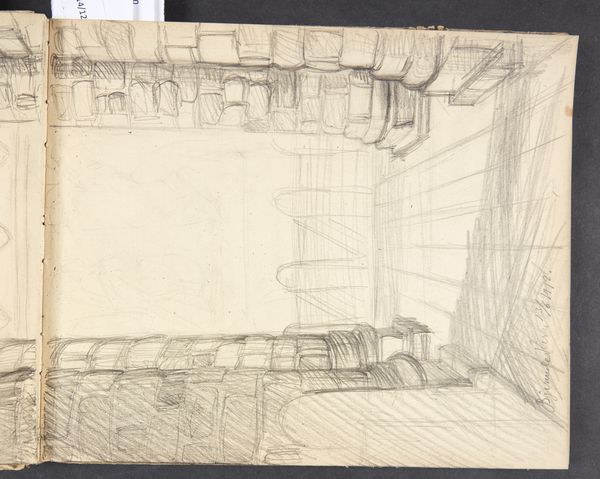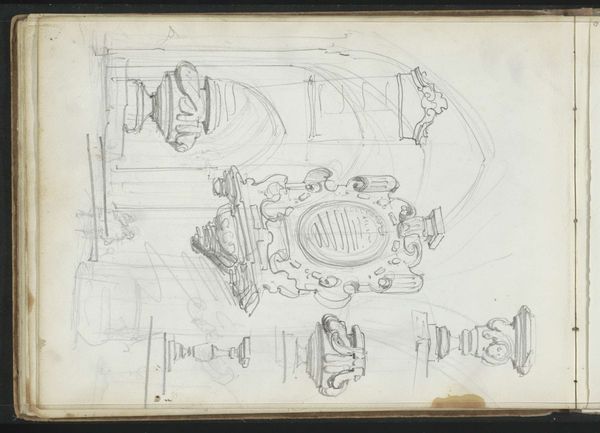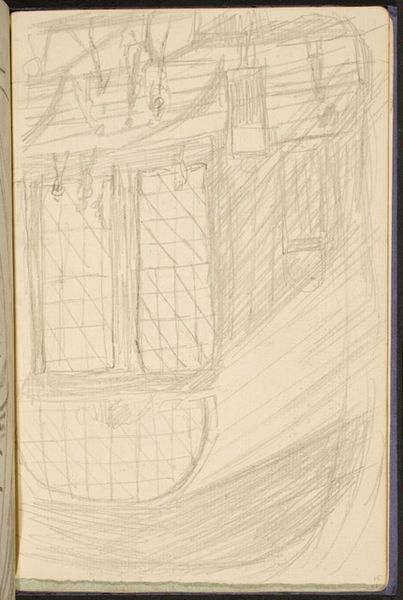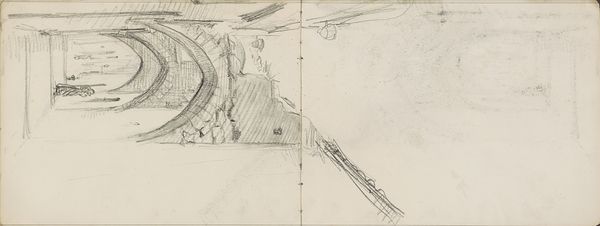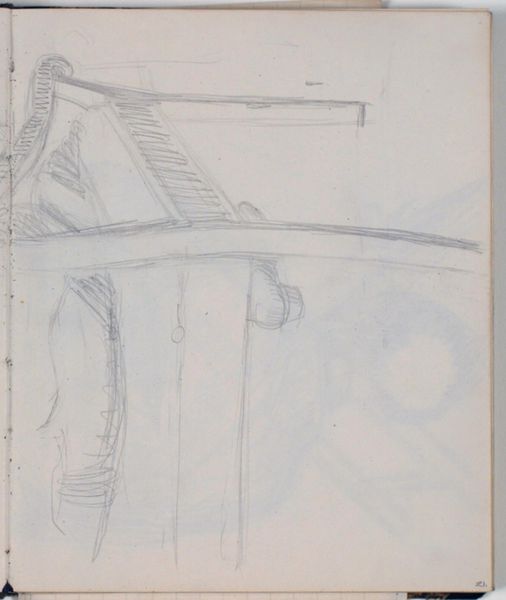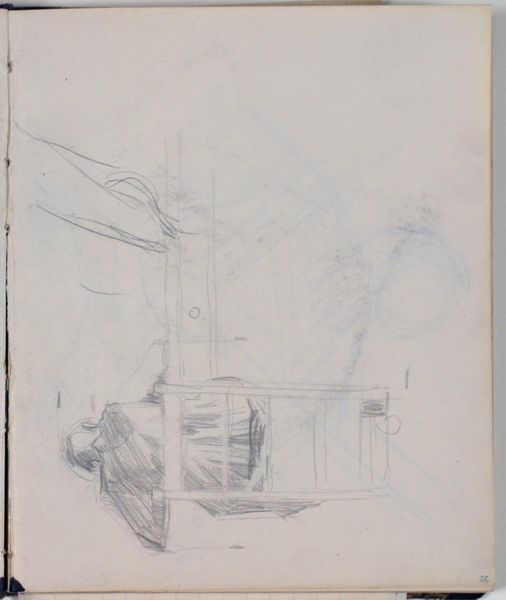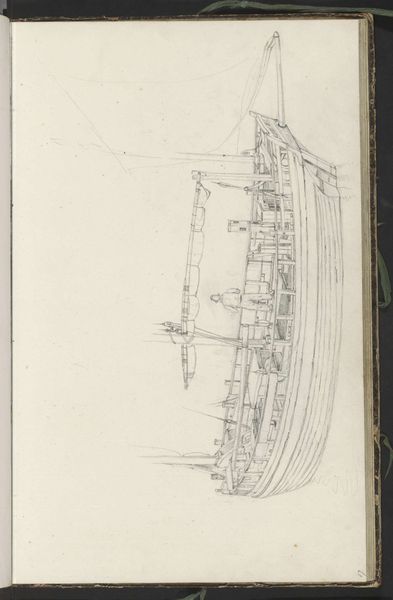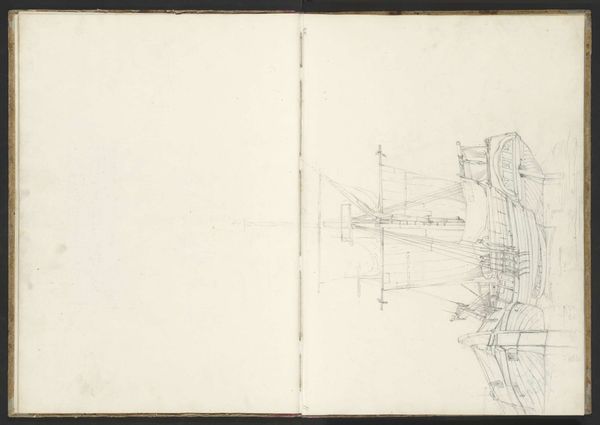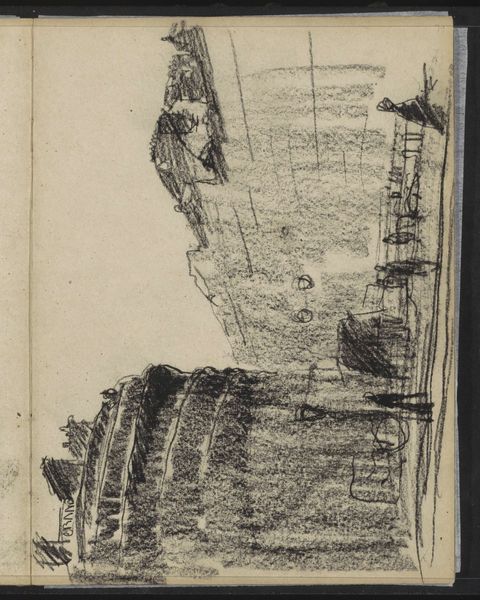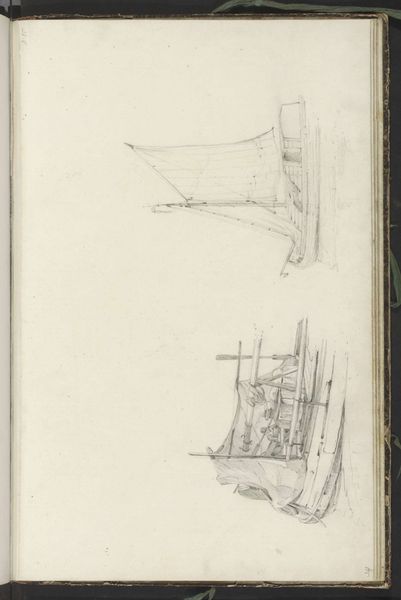
drawing
#
drawing
#
medieval
#
landscape
#
geometric
Dimensions: 245 mm (height) x 203 mm (width) (bladmål)
Editor: Agnes Slott-Møller’s 1912 pencil drawing, "Det indre af Bjernede Kirke" offers a peek inside this medieval Danish church. It feels preliminary, almost a ghost of a structure, yet sturdy with its geometric elements. What layers do you see in this piece? Curator: I see echoes, quite literally. This isn't just a depiction of architectural space; it's a rendering of cultural memory. The rough pencil strokes suggest a structure not just built of stone, but constructed over time, each line hinting at generations who worshipped within those walls. Editor: I’m struck by how little detail there is, and yet the arches convey such solidity. Is that contrast intentional? Curator: Perhaps. Arches, symbolically, represent more than just physical support. They're pathways, transitions, carrying both religious and historical weight. Slott-Møller uses them to suggest both the concrete reality of the church, and the abstract idea of faith moving through time. How does the geometric abstraction contribute to this effect for you? Editor: It almost modernizes it? It is, in a way, an image that is of its time but also completely outside of it, timeless. It seems the church is also, maybe, a memory of one? Curator: Precisely. And memory, as we know, isn't always perfectly rendered. Sometimes it’s a series of impressions, faded lines and symbolic echoes, precisely like what is drawn here. Editor: That reframes my entire experience! The sketch becomes a record of remembrance, both historical and intensely personal. Curator: Indeed, art invites such a blending of perspectives. And sometimes, the incomplete is more telling than the complete.
Comments
No comments
Be the first to comment and join the conversation on the ultimate creative platform.
